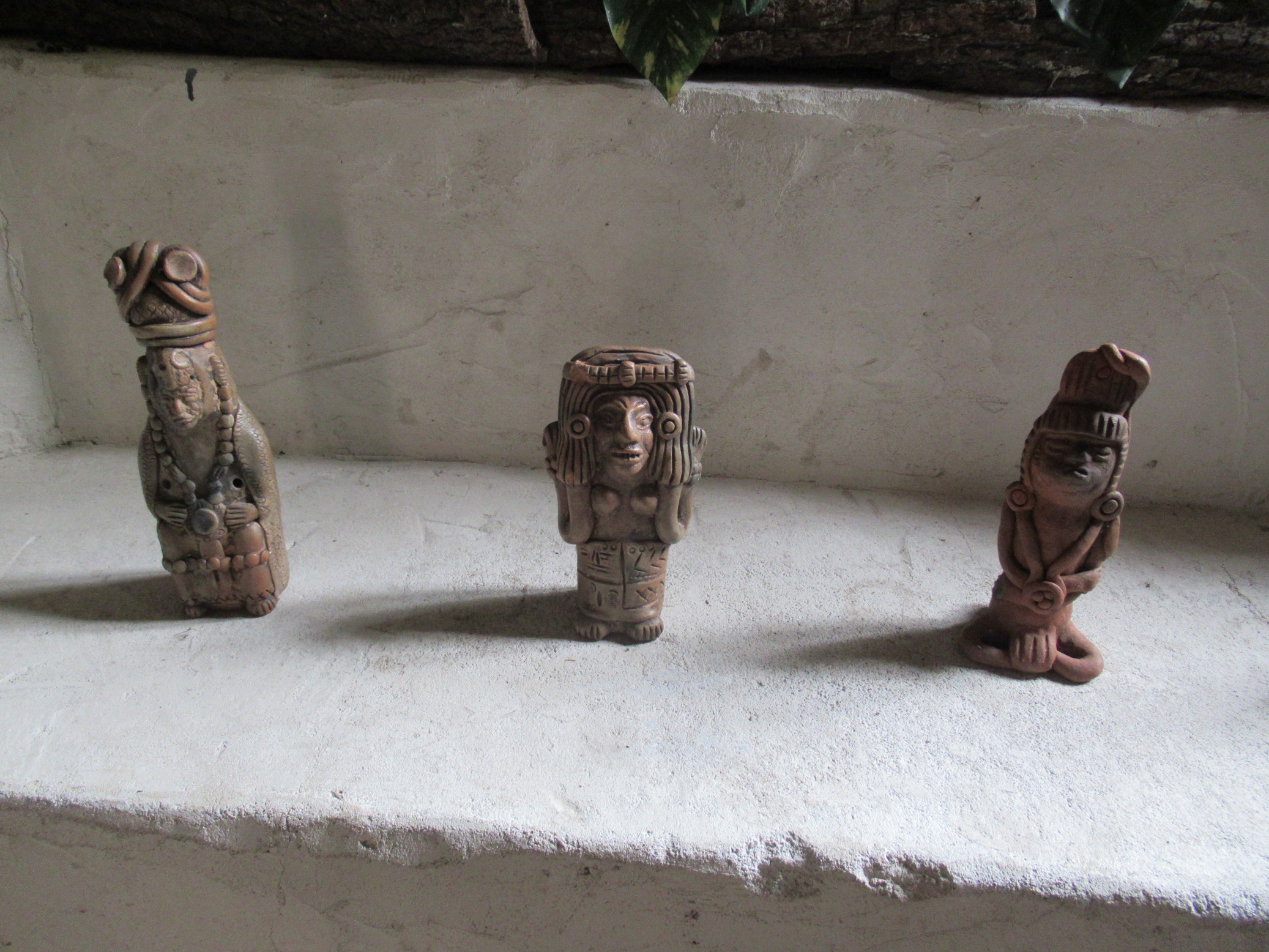North of Antigua a coffee plantation covers about as much land as the town itself. Within the plantation is a museum that explains the history of coffee, its origin in Ethiopia, introduction into Latin America, and why Guatemala is considered one of the best coffee-making countries of the world (they believe it’s the organic techniques and hand picking). For a non-coffee drinker, this holds only minor interest, but the same museum also has a section on the history of music in Mayan culture over the centuries, which really struck a chord with me.
Pre-Spanish conquest, music was only used for ceremony in Mayan culture, and there was no need for tune or rhythm to get the attention of the gods. All the instruments were designed to make as much noise as possible. The earliest instrument was the conch shell, but these were reproduced in clay as whistles. Over time, ocarinas were shaped into various animal forms, then into representations of people.
To these were added shakers and drums. Some drums looked like clay jugs, but my favourite was a turtle shell. Turned upside down, the belly-shell made three different tones depending where it was hit. With Spanish influence, and the idea of music for entertainment, these were replicated in wood and eventually guitars, marimbas and other more familiar instruments were added, but you can still buy the wooden drums on the streets of Antigua today.

Strike a cord, or chord? Yep, I’m really focusing on the important stuff today.
Nice insight into the history of music for Mayan culture. Perhaps music isn’t the universal phenomenon that we imagine it to be. Or perhaps, the early Mayans just didn’t know what music could be.
Perhaps we don’t know either. It’d be interesting to get a sample of music from the far future, and see how much we can complain about it as relative old folk.
You’re right. I used the Spanish spelling. That’s a good thing! But I’ll fix it now. Thanks.